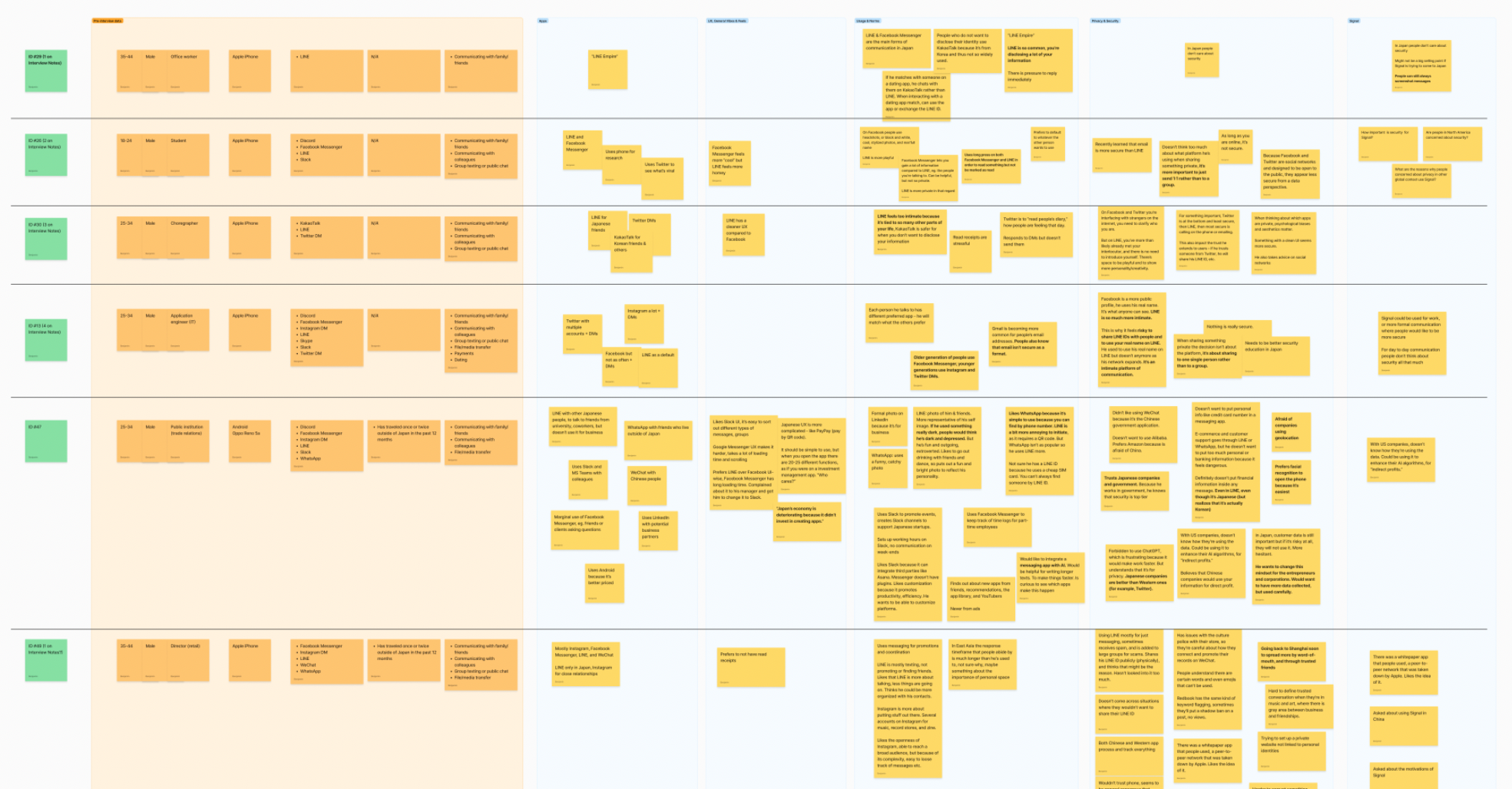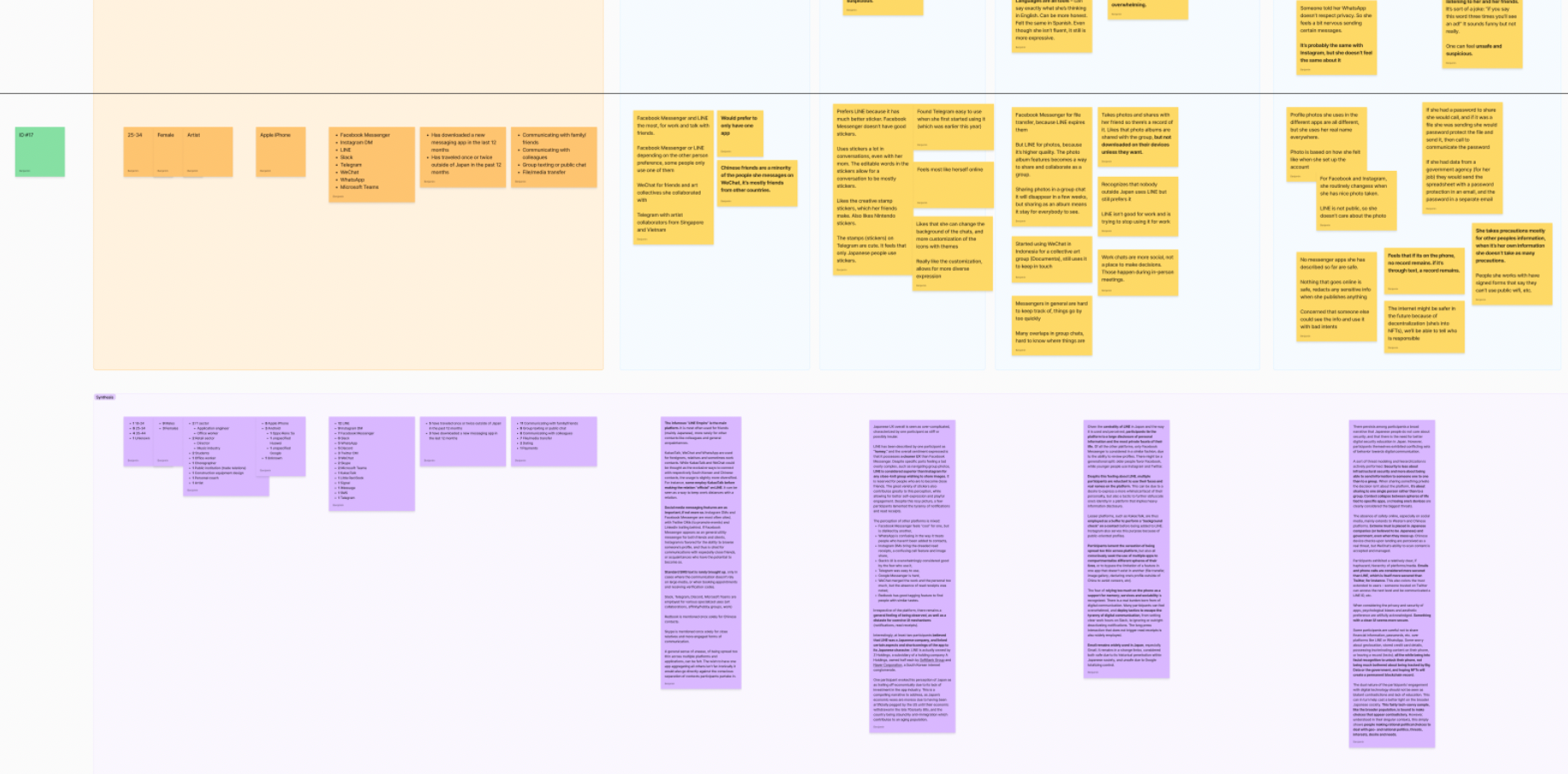SIGNAL EAST-ASIA RESEARCH
Design research, Sociopolitical analysis
A research project to help the Signal design team expand their mission to East Asia.
There's very little need to present Signal, the encrypted messaging app that made encryption mainstream upon its inception in 2014. For this project I assisted the core of their design team, helmed by Signal Foundation's president Meredith Whittaker, in defining the broader socio-political context around digital communication, messaging apps, encryption and privacy in East Asia.
This research focused on three countries: South Korea, Japan and Taiwan, selected for their importance in the region, as well as their relative familiarity with US technology. The work would be based on a series of interviews conducted in situ by the Signal team with citizens from each country. My role was to contribute to a sociopolitical pre-flight report on the region to ready the Signal team for their trip, produce the interview questionnaire, process the output of the interviews, and finally synthesise the insights generated.
REGIONAL CONTEXT
Signal's goal with this research was in line with its mission statement since its beginning: to provide encrypted telecommunications to as broad and mainstream an audience as possible. This research was to provide a foundation to the expansion of this mission to another region of the world. Indeed, while Signal is technically available to download in these countries, the app has not employed a custom approach to the unique idiosyncracies of East-Asian nations.
Each of the countries selected presented unique conditions, despite their geographic proximity. Japan modernity was forced by the outcome of World War 2, which came at a heavy toll for its society. It is a nation where the high-tech can often interact with more ancient technologies and devices. South Korea's turn to democracy has always been a complex one, and the Korean War still looms large over its polity. Taiwan is another very young democracy, its adversarial relationship with China influencing a military dictatorship whose effects are yet to fully fade away.
Likewise, they each deployed different industrial policies that shaped the development of their respective infrastucture, as well as their ecosystem of technology and media companies. In turn, these molded a certain attitude of their citizenry towards telecommunication, its mediums, its companies, and what can be expected of them.
USER INTERVIEWS
After the redaction of the short report on the broader sociopolitical context of each country, I wrote up the questionnaire that the Signal team was to use for the interviews. Each interview would take between an hour and half to two hours, and participants were everyday people who might be asked what some could perceive as personal informations. The tone and rhythm of the questionnaire needed to put them at ease, and help them get into a rich conversational mood. Likewise, the interview would be conducted through an interpretor in the local language, adding to the complexity and awkwardness of the exercise.
The recruitment would be handled by local partners in each country, and strived for a general balance across the spectrum of gender and sex, as well as class—or at least meaningful representation. The constraint of time, access and budget skewed the cohorts towards the masculine, and heavily towards middle-class/white collar workers. In total, 33 people were interviewed across the 3 countries in the span of 10 days.
The questionnaire was broadly split into two distinct parts. The first was geared towards obtaining general information about the participants: their device(s) of choice, operating systems, apps, etc. This initial series of questions was designed to be short and binary, in order to build a rough sociological picture of each country, and ease in the participants into the interview.
The questionnaire then progresses towards digging deeper into the behaviours, habits, concerns and desires of the participants. This series of questions were designed to elicit a more personal rapport with the interviewers, rather than yes/no or 'terminating thought' answers. They provided the opportunity to the participants to open about their life and discuss the texture of their social interactions mediated through technology, social media and messaging apps.
INTERVIEW OUTPUT
The next task was to process the answers and testimonies collected by the Signal team under the form of interview notes, and organise them into a shareable, legible format for later review and discussion. I created a Figma board and triaged the output of the interviews in tables, one for each country, with participants along the Y axis and questions along the X axis. Each participant was provided an ID number for easy tracking.

I mapped the answers using colour-coded sticky notes, with long-form answers broken down into separate notes according to the topics they addressed.

The last line of each country table was used as a space to synthesise all the answers for each question.

The tables were discussed with the Signal team at the end of each country visit, to get an early sense of how the research was shaping up, and debrief the interview process. It provided useful pointers to undertand which questions required more focus, what made the participant uncomfortable, etc. This feedback loop helped continuously improve the interviews.
CONCLUSION
This research provided key insights to the Signal design team which will shape their product strategy and design language as they expand their mission to East Asia. The synthesis of the interviews, combined with the sociopolitical analysis provided at the beginning of the project, helped the team draw conclusions based on historical facts, contemporary evidence and personal testimonies.



